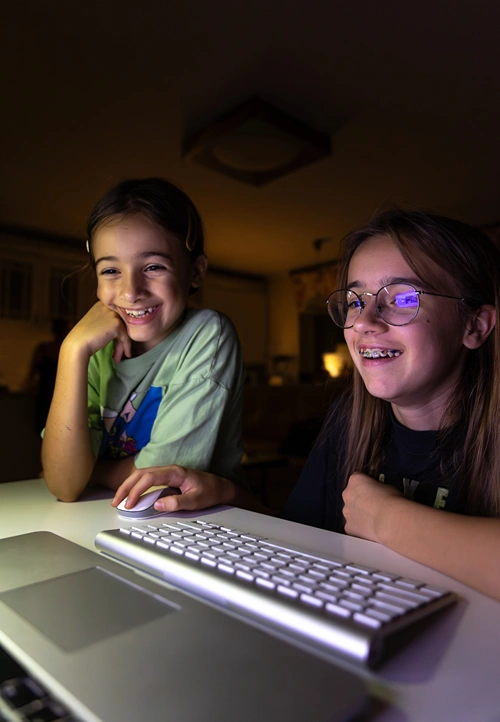RBT vs. BCBA vs. BCaBA: What’s the Difference and Which Path Is Right for You?
The field of Applied Behavior Analysis (ABA) is rapidly expanding, offering a range of professional roles to fit different interests and career goals. If you’ve been researching ABA credentials, you’ve likely encountered three acronyms: RBT, BCBA, and BCaBA.
Each of these credentials serves a distinct purpose, requires different levels of education and training, and offers varying degrees of responsibility.
Whether you’re looking to begin your journey or advance an existing career, understanding these certifications is crucial. In this article, we’ll break down each role—from direct, hands-on support to leadership and program oversight—so you can choose the path that aligns with your aspirations.
The ABA Hierarchy
Before diving into the specifics of each credential, it’s helpful to understand how they fit into the broader ABA hierarchy. Think of it as a ladder of experience and responsibility:
- RBT – Entry-level, direct implementation under supervision.
- BCaBA – Mid-tier certification, can supervise RBTs but still works under a BCBA.
- BCBA – Fully certified professional with authority to design and oversee behavior intervention plans independently.
All three roles operate within the framework of Applied Behavior Analysis, emphasizing data-driven interventions, ethical standards, and a commitment to improving client outcomes. However, each credential comes with its own set of qualification requirements and job duties.
What Is an RBT?
A Registered Behavior Technician (RBT) is the starting point for many professionals in the ABA field. RBTs primarily work directly with clients—often children on the autism spectrum or those with other developmental challenges. RBTs are responsible for carrying out the intervention plans designed by their supervising BCBA or BCaBA.
Role and Responsibilities
- Implementing behavior intervention plans on a day-to-day basis.
- Collecting data on target behaviors and progress.
- Maintaining ethical standards to ensure client dignity and confidentiality.
RBTs typically work in environments like clinics, schools, and homes. They are the “hands-on” facilitators of ABA strategies, using reinforcement, prompting, and data collection to help clients acquire new skills and reduce problematic behaviors.

Educational & Exam Requirements
- Minimum Education: High school diploma (or equivalent).
- Training: Completion of a 40-hour RBT training program.
- Assessment: Passing the RBT exam and undergoing a background check.
Because the educational requirement for becoming an RBT is relatively minimal, this role is an excellent gateway for individuals who want to explore ABA without committing to a lengthy degree program. It’s also popular among college students studying psychology, education, or related fields who wish to gain hands-on experience in behavior therapy.
If you’re seeking a career as a Registered Behavior Technician, you need to complete 40-hours coursework and pass the RBT certification exam.
The RBT exam consists of 85 questions from six content areas that you’ve studied in 40-hour coursework, but only 75 are scored. The 10 unscored questions are pre-tested for future BACB exams. You check the RBT sample questions and exam structure on the official BACB website.
What Is a BCaBA?
A Board Certified Assistant Behavior Analyst (BCaBA) holds a mid-level certification that offers greater responsibility than an RBT but less autonomy than a BCBA. This role acts as a “bridge” for those seeking more involvement in behavior plan development while still working under the guidance of a BCBA.
Role and Responsibilities
- Contributing to the design or modification of behavior intervention plans.
- Supervising RBTs to ensure interventions are carried out correctly.
- Collecting and analyzing data, though final oversight typically rests with a BCBA.
BCaBAs often handle more complex cases or advanced aspects of planning while still collaborating closely with a BCBA. For many professionals, becoming a BCaBA is a natural progression: it allows them to expand their skill set and leadership abilities before deciding whether to pursue full BCBA certification.
Educational & Exam Requirements
- Minimum Education: Bachelor’s degree in psychology, education, or a related field, including specific ABA coursework.
- Fieldwork: A set number of supervised fieldwork hours under a qualified BCBA.
- Exam: Passing the BCaBA exam.
This role can be an ideal steppingstone if you’re already working as an RBT and want to assume more responsibility. It’s also a great option for those who are sure they want a career in ABA but aren’t ready—or don’t have the resources yet—to invest in a master’s degree program.
What Is a BCBA?
A Board Certified Behavior Analyst (BCBA) is the highest level of certification among these three credentials. BCBAs are fully certified to independently design and oversee ABA interventions. Their expertise allows them to work in a variety of settings, including private practices, schools, and clinical programs.
Role and Responsibilities
- Conducting Functional Behavior Assessments (FBAs) and Functional Analyses (FAs).
- Developing comprehensive intervention plans tailored to each client’s needs.
- Supervising BCaBAs and RBTs, providing ongoing guidance and training.
- Handling ethical and administrative responsibilities, including client intake and professional documentation.
Because BCBAs hold the greatest authority, their work has a broader impact on service delivery. They can make critical decisions about treatment goals, coordinate with interdisciplinary teams (e.g., speech therapists, occupational therapists), and even manage entire ABA clinics.
Educational & Exam Requirements
- Minimum Education: Master’s degree or higher in behavior analysis or a related field, with verified ABA coursework.
- Fieldwork: Several hundred to thousands of hours of supervised experience (depending on the certification requirements at the time).
- Exam: Passing the BCBA exam.
This path is ideal if you’re driven to take on leadership roles in ABA, manage cases end-to-end, and significantly influence how therapy is delivered. However, it demands a substantial investment of time, money, and dedication to advanced study.
Education and Exam Differences
The official website of BACB provides detailed examination information. However, here’s a quick overview and difference between these exams.
RBT:
- Quick entry, minimal formal education requirement beyond high school.
- A short, intensive training course and a straightforward exam focused on fundamental ABA techniques.
BCaBA:
- Requires a bachelor’s degree and more advanced ABA coursework.
- Involves supervised fieldwork, which can be a crucial step in bridging your practical knowledge gap.
BCBA:
- Requires a master’s degree or higher and extensive ABA coursework.
- Significant supervised fieldwork and a rigorous exam that covers advanced concepts in behavior analysis, research methods, and ethics.
The degree of responsibility and autonomy is closely tied to how much education and supervised experience you acquire. Typically, the more advanced your education and fieldwork, the more freedom you’ll have in designing and directing behavior interventions.
Which Path Is Right for You?
Deciding between RBT, BCaBA, or BCBA largely depends on your personal goals and current life circumstances. Here are a few key questions to ask yourself:
How much time and money can I invest?
- If you’re unsure about committing to a long academic program, starting as an RBT is an excellent way to test the waters.
- If you already have a bachelor’s degree, you might consider BCaBA certification to advance your career more quickly.
- If you’re aiming for a leadership position or private practice, BCBA certification is the gold standard.
How much responsibility do I want?
- RBTs focus on delivering direct services under supervision.
- BCaBAs have moderate independence but still require oversight from a BCBA.
- BCBAs can work autonomously, supervise others, and drive the direction of ABA interventions.
Do I enjoy hands-on work, or do I aspire to supervisory roles?
- RBTs and BCaBAs still do a good amount of direct client interaction.
- BCBAs focus more on program design, data analysis, and big-picture decisions.
Am I seeking to specialize further?
- Some BCBAs go on to earn doctoral degrees, conduct research, or focus on particular populations (e.g., adults with developmental disabilities, organizational behavior management).
- If you love research and theory, a BCBA might be a steppingstone to a doctoral path.
Ultimately, many professionals start as RBTs, then move on to become BCaBAs or BCBAs after gaining a few years of practical experience and completing higher education. This stepping-stone approach allows you to build confidence, refine your skill set, and confirm that ABA is the right fit for you long-term.
Conclusion
In the ever-growing field of Applied Behavior Analysis, there’s room for passionate professionals at every level—whether you’re drawn to the hands-on work of an RBT, the mid-level leadership of a BCaBA, or the full autonomy and oversight responsibilities of a BCBA. Each role plays an integral part in helping individuals improve their daily functioning, communication skills, and overall quality of life.







